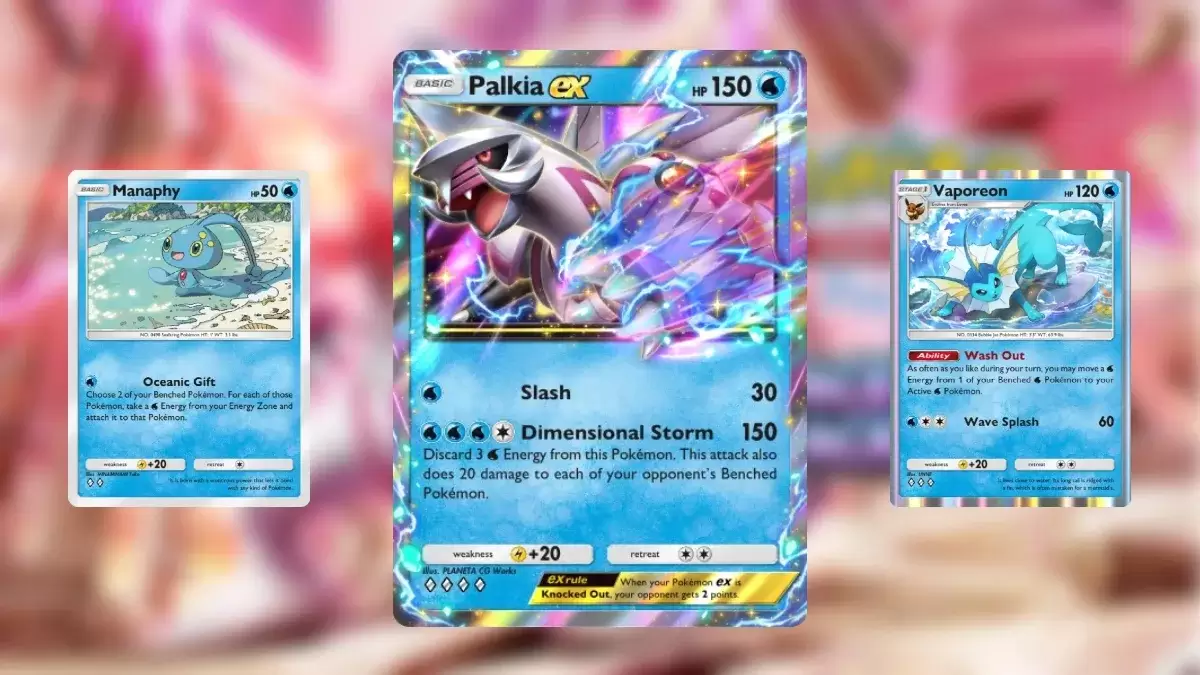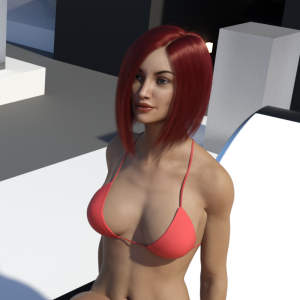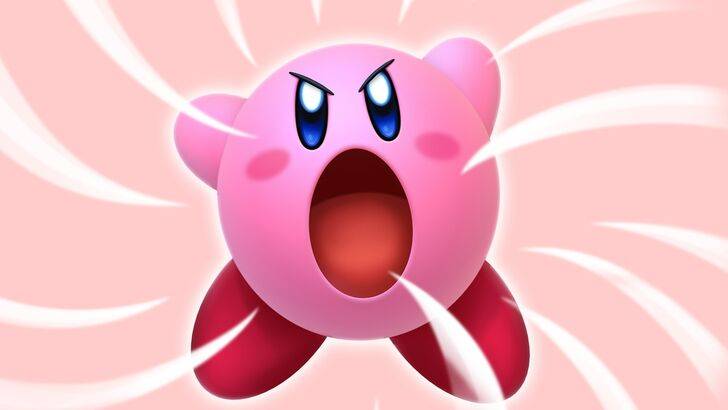
Former Nintendo employees have shed light on why Kirby's appearance varies between the U.S. and Japan. Delve into the reasons behind these changes and understand Nintendo's approach to global marketing and localization.
"Angry Kirby" Was Made To Appeal To Wider Audiences
Nintendo Rebranded Kirby For More Appeal In The West

Kirby's fiercer and tougher look on game covers and artworks was designed to appeal more to American audiences, earning the nickname "Angry Kirby" from fans. In an interview with Polygon on January 16, 2025, former Nintendo Localization Director Leslie Swan revealed the rationale behind altering Kirby’s look for Western markets.
Swan explained that in the early 2000s, the intent was not to make Kirby look angry but to showcase determination. She noted, "Cute, sweet characters are popular among people of all ages in Japan." However, she added, "In the U.S., tween and teen boys tend to be drawn to tougher characters."
Kirby: Triple Deluxe Director Shinya Kumazaki, speaking to GameSpot in 2014, highlighted that the cute version of Kirby attracts more players in Japan, whereas a "strong, tough Kirby that's really battling hard" resonates better in the U.S. Yet, he acknowledged that this varies by game, citing Kirby Super Star Ultra, which featured a tough Kirby on both U.S. and Japanese box art. Kumazaki emphasized that while showcasing Kirby's serious side through gameplay was important, the character's cuteness remains a significant draw in Japan.
Advertising Kirby As "Super Tuff Pink Puff"
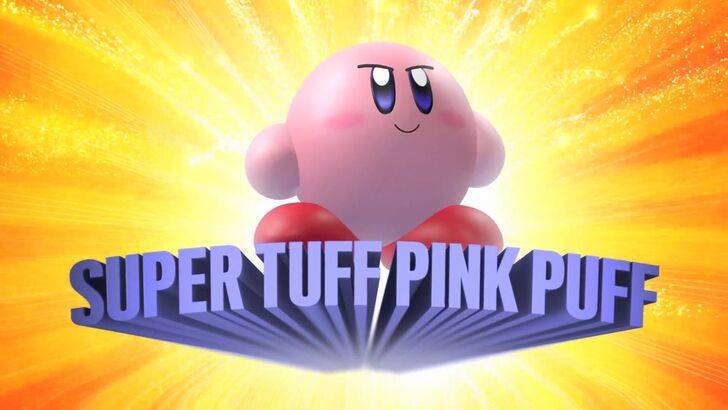
Nintendo's marketing strategy aimed to broaden Kirby's appeal, particularly among boys, leading to the branding of Kirby as "Super Tuff Pink Puff" in the 2008 Nintendo DS game, Kirby Super Star Ultra. Former Nintendo of America Public Relations Manager Krysta Yang discussed how Nintendo sought to shed its "kiddie" image during her early tenure. She stated, "There was certainly a period of time for Nintendo, and even gaming in general, to have a more adult/cool factor." Yang added that being labeled as "kiddie" was seen as a drawback.
Nintendo consciously worked to portray Kirby as tougher and emphasize the combat aspects of its games, aiming to distance the character from being perceived solely as content for young children. In recent years, the focus has shifted from Kirby's personality to gameplay and abilities, as seen in promotional materials for Kirby and the Forgotten Land in 2022. Yang noted, "There’s been a continued push to make Kirby into a more well-rounded character, but it’s true that most people still regard Kirby as cute versus tough."
Nintendo’s U.S. Localization For Kirby
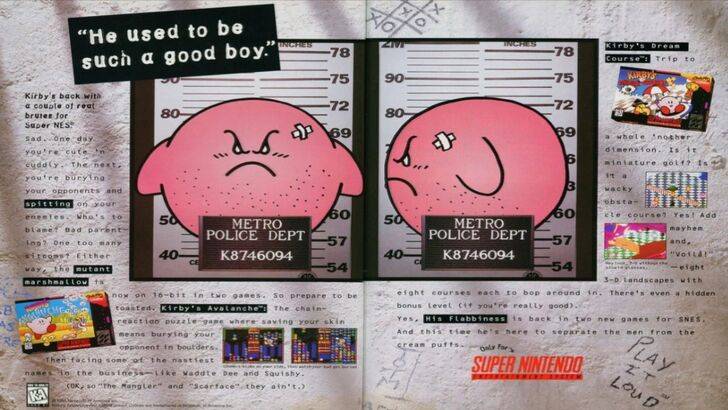
The divergence in Kirby's localization between Japan and the U.S. began with a notable 1995 print ad featuring Kirby in a mugshot as part of Nintendo’s "Play It Loud" campaign. Over the years, Kirby's box art varied, with titles like Kirby: Nightmare in Dream Land in 2002, Kirby Air Ride in 2003, and Kirby: Squeak Squad in 2006 showing Kirby with sharp eyebrows and a stern expression.
However, the adjustments went beyond facial expressions. In 1992, Kirby’s Dreamland was released for the GameBoy, marking the debut of the Kirby series. The U.S. box art depicted Kirby with a ghostly-white tone, contrasting the pink hue of the Japanese version. This was due to the GameBoy's monochrome display, with U.S. players seeing Kirby's original pink color only with the release of Kirby’s Adventure on NES in 1993. Swan remarked that this posed a challenge, stating, "A puffy pink character for boys who are trying to be cool just wasn’t going to get the sales that everybody wanted."
Consequently, Nintendo of America altered Kirby's facial expressions on U.S. box artwork to appeal to a broader audience. In recent years, Kirby's global advertising has become more uniform, alternating between serious and gleeful expressions.
Nintendo’s Global Approach

Both Swan and Yang agreed that Nintendo has shifted towards a more global outlook in recent years. Nintendo of America now collaborates closely with its Japan office to ensure consistent marketing and localization strategies, moving away from regional variations like those seen in Kirby's box art and the 1995 "Play It Loud" ad.
Yang explained that the global audience hasn't changed significantly, stating, "It was a business strategy change to have more global marketing. It’s good and bad. Being global means consistency for the brand across all regions, but sometimes there is a disregard for regional differences." She suggested that this could lead to "really bland, safe marketing for some of Nintendo’s products."
Game localizers believe that the current trend towards uniform localization reflects the broader globalization of the industry and the growing familiarity of Western audiences with Japanese culture, including games, movies, manga, anime, and other media.


